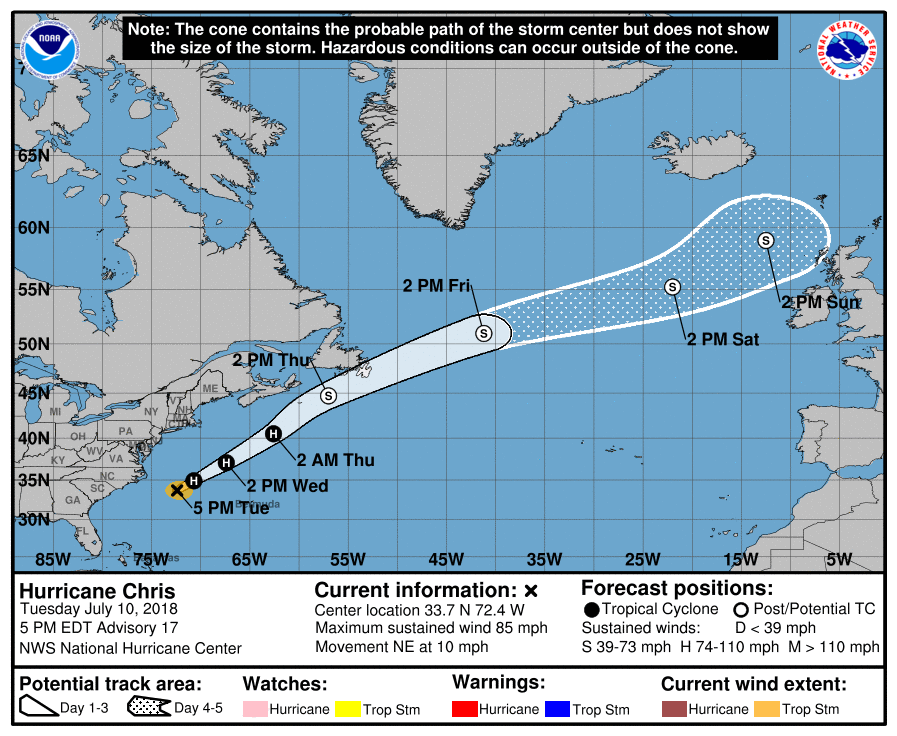Tropical Storm Chris officially became a hurricane Tuesday as it continues to move away from the Carolina coast and head northeast towards Canada at 10 mph, the National Hurricane Center says.
Hurricane Chris is currently about 205 miles off the coast of Cape Hatteras, with sustained maximum wind speeds of 85 mph extending at least 15 miles from the center. It’s expected to remain “well offshore” of the U.S. coast, forecasters say, instead steadily heading for Newfoundland while picking up forward speed through Thursday night.
Chris is forecast to gather strength through Wednesday, but should start weakening by Thursday and revert back to a tropical storm by Friday, according to the NHC. Hurricane Chris is unlikely to strike land, though NHC forecasters say it will become a “powerful extratropical cyclone” on its way to Newfoundland, bringing dangerous conditions all the same.

Although Hurricane Chris is headed towards Canada, it will still create severe weather for those on the U.S. East Coast. High surf and dangerous rip currents are expected to spread from the North Carolina coast to New England for several days. The swells generated from Hurricane Chris are expected to cause “life-threatening” current conditions, the NHC says, and beachgoers and boaters on the coast of North Carolina and the mid-Atlantic states are advised to avoid the waters if possible.
More Must-Reads from TIME
- Cybersecurity Experts Are Sounding the Alarm on DOGE
- Meet the 2025 Women of the Year
- The Harsh Truth About Disability Inclusion
- Why Do More Young Adults Have Cancer?
- Colman Domingo Leads With Radical Love
- How to Get Better at Doing Things Alone
- Michelle Zauner Stares Down the Darkness
Write to Gina Martinez at gina.martinez@time.com